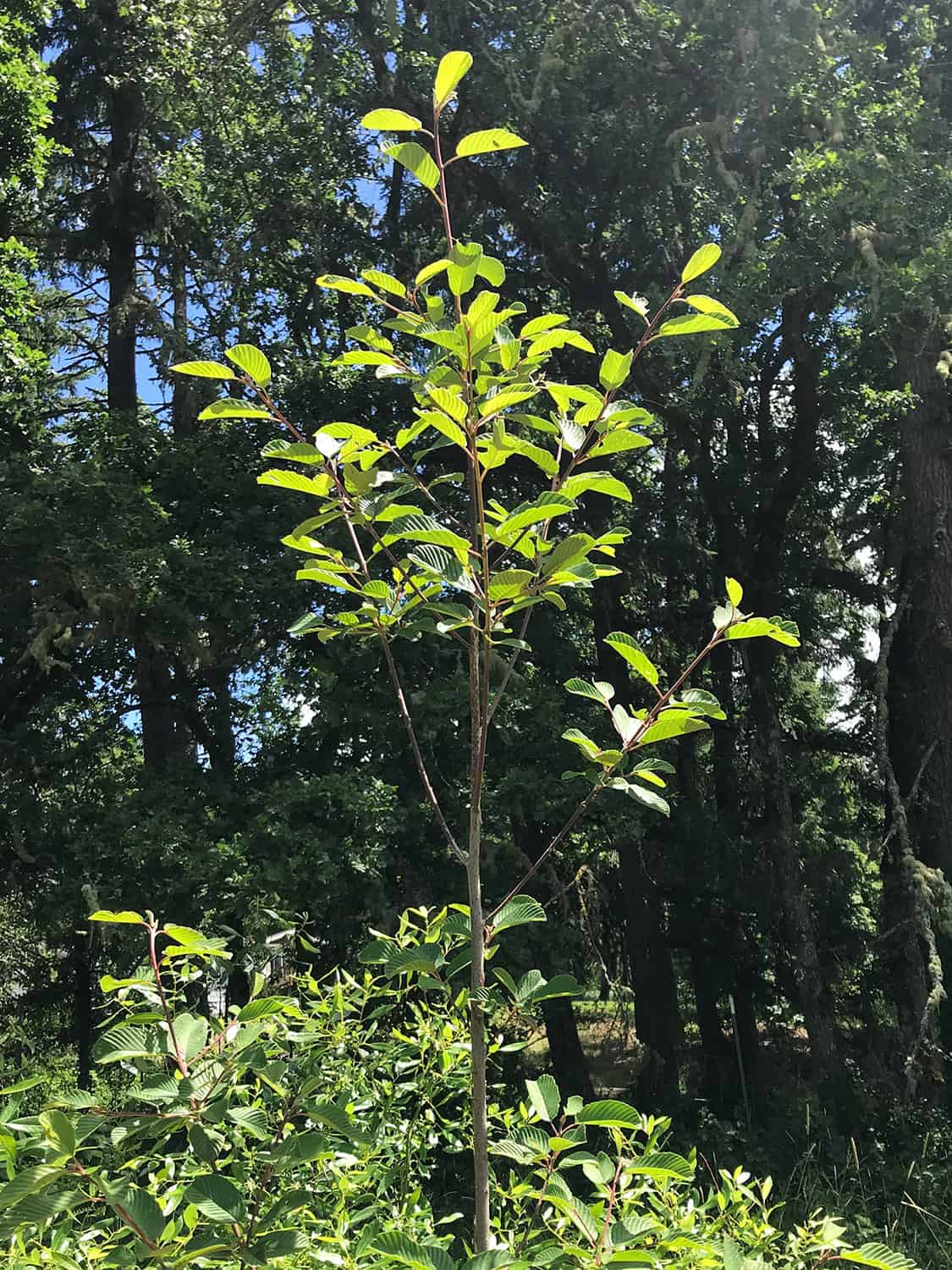| Weight | N/A |
|---|---|
| Dimensions | N/A |
| Botanical Name | Rhamnus purshiana |
| Zone | 4-9 |
| Soil | Wide range of soils, clay to sandy loam, prefers well drained soils |
| Light | Shade to full sun, tolerates shade well |
| Pollination | Self-fertile |
| Form | PNW Native drupe with dark berries. Upright, often with multiple trunks and spreading branches this is a deciduous tree with smooth bark of deep red/brown color. |
| Height | 30 feet |
| Spread | 15-20 feet |
| Spacing | 10-15 feet |
| Bloom | Showy white umbel flower clusters bloom in May providing striking contrast against the dark bark. Flowers form to berries which start red and turn to a deep purple black in fall. Autumn foliage is a very intense yellow and can have shades of orange and red as well. |
| Fruit | Small triangular round berries each containing 3 shiny black seeds. |
| Pollinator Friendly | Yes |
Cascara
$10.00
Cascara (Rhamnus purshiana) is a beautiful deciduous tree native to the Pacific North West and grows in a range from coastal British Columbia to Northern California. It likes to grow in the understory of mixed forests and prefers moist soil, but is tolerant of dry summer conditions as well. Cascara typically grows into a large bush or small tree with a mature height of 30 feet, often with multiple trunks.
Cascara is quite beautiful with its prominently veined leaves, white flower clusters, and dark smooth bark and we have planted several throughout our nursery.
Natives have used the bark from the Cascara tree to make a laxative tea, and after Cascara was introduced into modern medicine in the late 1800s, overharvesting has threatened this species.



Reviews
There are no reviews yet.